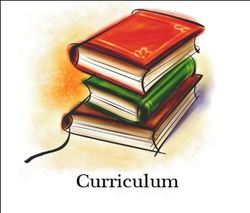
(Non)standardization in the BC ESL/ELL Curriculum
The B.C. Ministry of Education sets the curriculum for students in grades K to 12 through the provincial curriculum. While most subjects have detailed Prescribed Learning Outcomes, ESL/ELL do not. As an ELL/ESL specialist, I am curious as to the reasons for not having a unified PLOs for English Language Learners. Certainly, there are merits and disadvantages of having a set standard for students when it comes to language learning subjects due to different levels, ages, and abilities of students in given classrooms. I borrowed the title “Room for Debate” from The New York Times website because I have decided to present my inquiry project as a form of an online debate by posting articles on perspectives from different sides, definitions of terms, and comparisons of current curriculum. Viewers can increase the quality of the indirect debate by commenting on each articles regarding their thoughts.
References
Banks, J. A. (Ed.). (2012). Encyclopedia of diversity in education. (Vols. 1-4). Thousand Oaks, CA: SAGE Publications, Inc. doi: http://dx.doi.org/10.4135/9781452218533
Burnett, Joanne. The Cambridge Guide to Second Language Teacher Education Edited by BURNS, ANNE, & JACK C. RICHARDS. 95 Vol. Malden, USA: Blackwell Publishers Ltd, 2011. Print.
Duff, A. Patricia. Handbook of Research in Second Language Teaching and Learning, Volume 1, ESL in Secondary Schools: Programs, Problematic, and Possibilities
Lessow-Hurley, J. (2003). Meeting the needs of second language learners: An educator’s Guide. Alexandria, VA: Association for Supervision and Curriculum Development.
Miller, P. & Endo, H. (2004). Understanding and meeting the needs of ESL students. Phi Delta Kappan, 85(10), 786-791.
Rodgers, Catherine Ann. “Curriculum and Culture: Reflecting on Resistance in an ESL Classroom.” ProQuest, UMI Dissertations Publishing, 1997. Print.
Sleeter, C. E. (2005). Un-standardizing curriculum: Multicultural teaching in the standards-based classroom. New York: Teachers College Press.
Steiner, Judy. Why have a standards-based curriculum and what are the implications for the teaching-learning-assessment process? Retrieved from:
http://www.etni.org.il/red/etninews/issue4/whystandard.html
Non-scholarly sources:
British Columbia Ministry of Education. (2009). English as a second language: Policy and guidelines. Retrieved from http://www.bced.gov.bc.ca/esl/policy/guidelines.pdf
English Language Learners ESL and ELD Programs and Services: Policies and Procedure for Ontario Elementary and Secondary Schools, Kindergarten to Grade 12
Language education in BC schools: Policy and guidelines. Victoria.
Review of English as a Second Language Programs by the Quality Assurance Division
State of Tennessee Department of Education ESL Curriculum Standards
The B.C. Ministry of Education sets the curriculum for students in grades K to 12 through the provincial curriculum. While most subjects have detailed Prescribed Learning Outcomes, ESL/ELL do not. As an ELL/ESL specialist, I am curious as to the reasons for not having a unified PLOs for English Language Learners. Certainly, there are merits and disadvantages of having a set standard for students when it comes to language learning subjects due to different levels, ages, and abilities of students in given classrooms. I borrowed the title “Room for Debate” from The New York Times website because I have decided to present my inquiry project as a form of an online debate by posting articles on perspectives from different sides, definitions of terms, and comparisons of current curriculum. Viewers can increase the quality of the indirect debate by commenting on each articles regarding their thoughts.
References
Banks, J. A. (Ed.). (2012). Encyclopedia of diversity in education. (Vols. 1-4). Thousand Oaks, CA: SAGE Publications, Inc. doi: http://dx.doi.org/10.4135/9781452218533
Burnett, Joanne. The Cambridge Guide to Second Language Teacher Education Edited by BURNS, ANNE, & JACK C. RICHARDS. 95 Vol. Malden, USA: Blackwell Publishers Ltd, 2011. Print.
Duff, A. Patricia. Handbook of Research in Second Language Teaching and Learning, Volume 1, ESL in Secondary Schools: Programs, Problematic, and Possibilities
Lessow-Hurley, J. (2003). Meeting the needs of second language learners: An educator’s Guide. Alexandria, VA: Association for Supervision and Curriculum Development.
Miller, P. & Endo, H. (2004). Understanding and meeting the needs of ESL students. Phi Delta Kappan, 85(10), 786-791.
Rodgers, Catherine Ann. “Curriculum and Culture: Reflecting on Resistance in an ESL Classroom.” ProQuest, UMI Dissertations Publishing, 1997. Print.
Sleeter, C. E. (2005). Un-standardizing curriculum: Multicultural teaching in the standards-based classroom. New York: Teachers College Press.
Steiner, Judy. Why have a standards-based curriculum and what are the implications for the teaching-learning-assessment process? Retrieved from:
http://www.etni.org.il/red/etninews/issue4/whystandard.html
Non-scholarly sources:
British Columbia Ministry of Education. (2009). English as a second language: Policy and guidelines. Retrieved from http://www.bced.gov.bc.ca/esl/policy/guidelines.pdf
English Language Learners ESL and ELD Programs and Services: Policies and Procedure for Ontario Elementary and Secondary Schools, Kindergarten to Grade 12
Language education in BC schools: Policy and guidelines. Victoria.
Review of English as a Second Language Programs by the Quality Assurance Division
State of Tennessee Department of Education ESL Curriculum Standards
 RSS Feed
RSS Feed